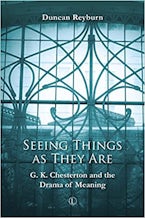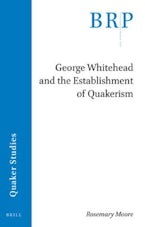Witness, Warning, and Prophecy is an in-depth study of women’s public writing and activity in the 17th-century Quaker movement, known to themselves as the Society of Friends. The editors have reproduced and analyzed forty texts out of a possible two hundred and twenty, representing several genres of 17th-century Quaker women’s writing: proclamations, directives, warnings, sufferings, testimonies, polemics, and pleas for toleration. They did this in a range of literary styles and voices: poetry, sermons, legal disquisitions, and biblical prophecy. Quaker women also experimented with different kinds of delivery: preaching and publishing in pairs while nursing newborn children and offering themselves as a sacrifice to magistrates and priests.
The long introduction covers the political upheavals of the revolutionary period in clear and concise detail. The editors are chiefly interested in the way people thought about political and religious authority. Political writings and events were crucial to the development of the Quaker movement because they created “a constituency ripe for the message of the Holy Spirit’s capacity to transform and perfect willing believers” (7). The editors are somewhat less fulsome in analyzing the social and spiritual movements that originated in the period. There is no detailed comparative discussion of female prophets who were not Quakers or of the male visionaries who flourished during the period.
Quakers were skilled in the use of the press, considering print as a substitute for preaching. Tracts were developed from letters written by preachers to local congregations and delivered in the marketplace or in church, interrupting the minister’s sermon. Many such tracts were openly identified as Quaker and supported by prominent Friends. An important example was Martha Simmonds, a lay preacher and writer, who was married to Thomas Simmonds, an active printer of religious works.
Women writers expressed themselves in a variety of languages, but they shared the same basic concerns. Quakers believed that each and every person could manifest the spiritual perfection of Christ and viewed much social behavior and social and intellectual hierarchies as forms of corruption. They were particularly opposed to university-educated, salaried ministers and to the payment of tithes (the salary of the parish priest). In their social behavior, they attempted to speak plainly, viewing greetings and social formalities as unnecessary and therefore corruptions of genuine relationships.
We see how these principles played out within the movement in the confrontation of James Nayler and George Fox. Martha Simmonds and Nayler focused on the individual’s response to the workings of the spirit, while George Fox and Margaret Fell (a gentlewoman who married Fox) supported a strong organizational structure with George Fox in command. The argument climaxed in Nayler’s entrance into the city of Bristol in 1656, riding a horse (other writers say it was an ass) in imitation of Jesus’s entry into Jerusalem. Fox was horrified and subsequent developments show his dominance of the movement, one element of which was the Quakers’ peace testimony, which has prevailed until today. Nayler’s action also resulted in an escalation of persecution against Friends, who embraced martyrdom rather than cooperate with any form of political or religious authority. And the martyrdom was extreme. In the years before the Toleration Act outlawed persecution in 1689, over ten thousand Quakers had been imprisoned and their goods confiscated.
Another of Fox’s innovations was the creation of separate men’s and women’s meetings, a measure that has aroused both praise and criticism from modern feminists. The meetings dealt with charity, finding apprenticeships for young women, tending to the sick and those in prison and in general, “the moral care of women Friends and the stopping of false reports or difficulties tending to disunity among Friends” (23). The Quaker leadership also took control over the publication of Friends’ writing, adding the works of medieval mystics and eliminating politically radical works by Friends. “Ultimately, the Quaker community would split over questions of church government: was it inappropriate interference with individual conscience or the necessary application of discipline to unruly members? Those Quakers who privileged the workings of the Spirit over the corporate body of believers left the Society of Friends and, unwilling to impose rules on one another, disappeared from history” (26).
Witness, Warning, and Prophecy is organized according to genres of women’s writings, prophecy, and late 17th-century quietism and organization. Prophetic writings are further divided into texts on the inner light and the theology of the Friends. A second group of tracts address men in authority; the third address specific audiences (the University of Oxford, the people of England). The editors do an excellent job of pointing out important themes in this literature, emphasizing the radical import of Martha Simmonds’s writings, for example, the idea of the presence of Christ within and her advice on how to attain it: “Yea, thou shalt know, that for that very end is there a measure of Christ given unto thee; that if thou deny thy self, and yield obedience to his will, thou shalt witness the whole Law fulfilled in thee” (29).
In women’s writings on the actual conduct of religious business in the women’s meetings, the tone is expectedly milder and more rational, but the prophetic import is the same. Mary Elson published “An Epistle for True Love, Unity and Order in 1680”: “And when dear G. Fox declared unto us that there should be a Women’s Meeting, that so all the Sick, the Weak, the widows and the Fatherless, should be minded and looked after in their Distresses … I can truly say, we had an answer of God in our Hearts to his Testimony, and my Soul was refreshed at that time, and my Heart tendered, with many more of my Sisters … I do declare, that it was the same everlasting quickening Power that first us by the Spirit of Judgment and of Burning, and wrought in our inward parts mightily … to purify and to cleanse, to purge our and put under all that was contrary to the Lord, and to make us Habitations fit to do his Will, that gathered us and made us a Meeting” (349).
Phyllis Mack is Professor Emerita of History at Rutgers University.
Phyllis Mack
Date Of Review:
August 29, 2018









